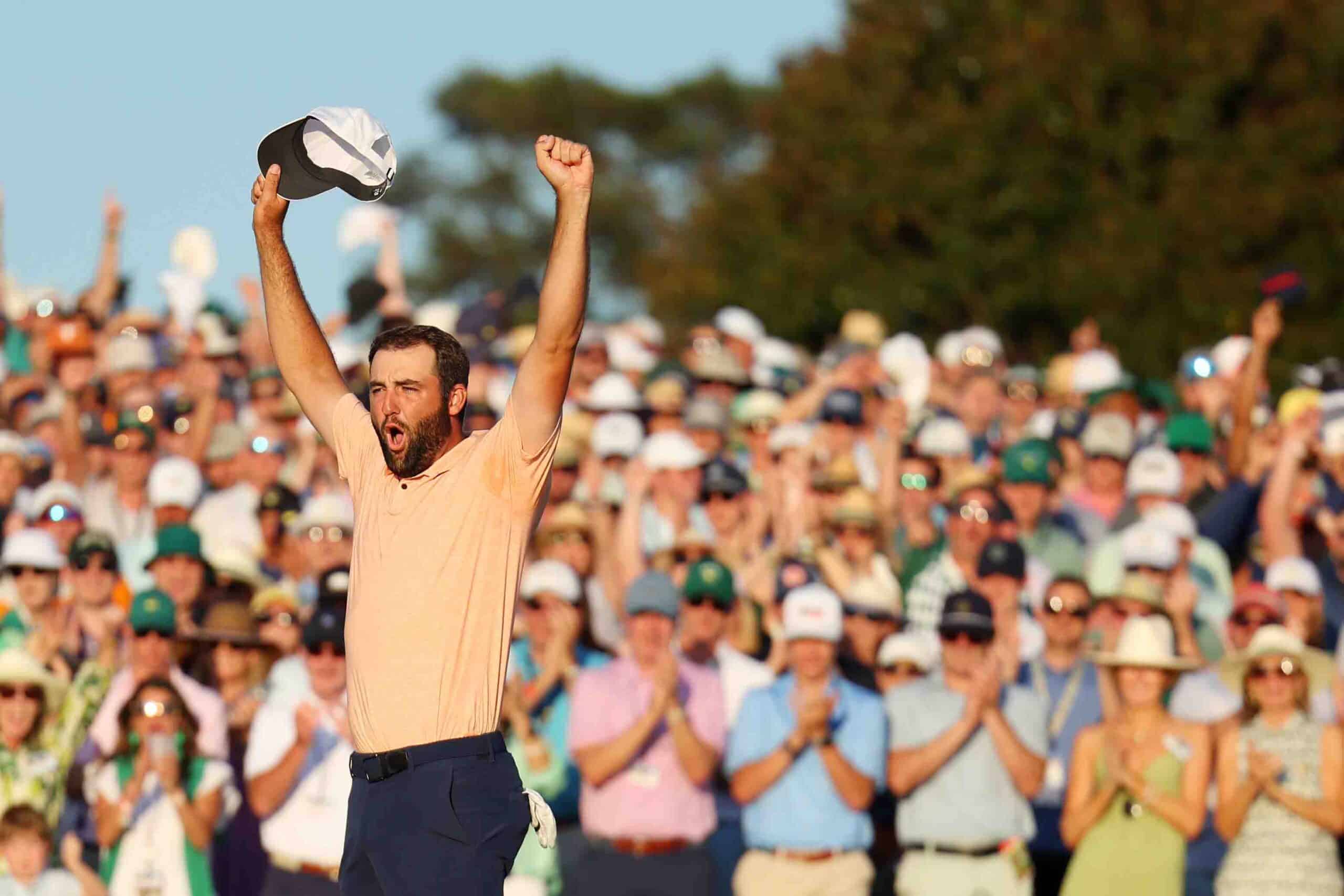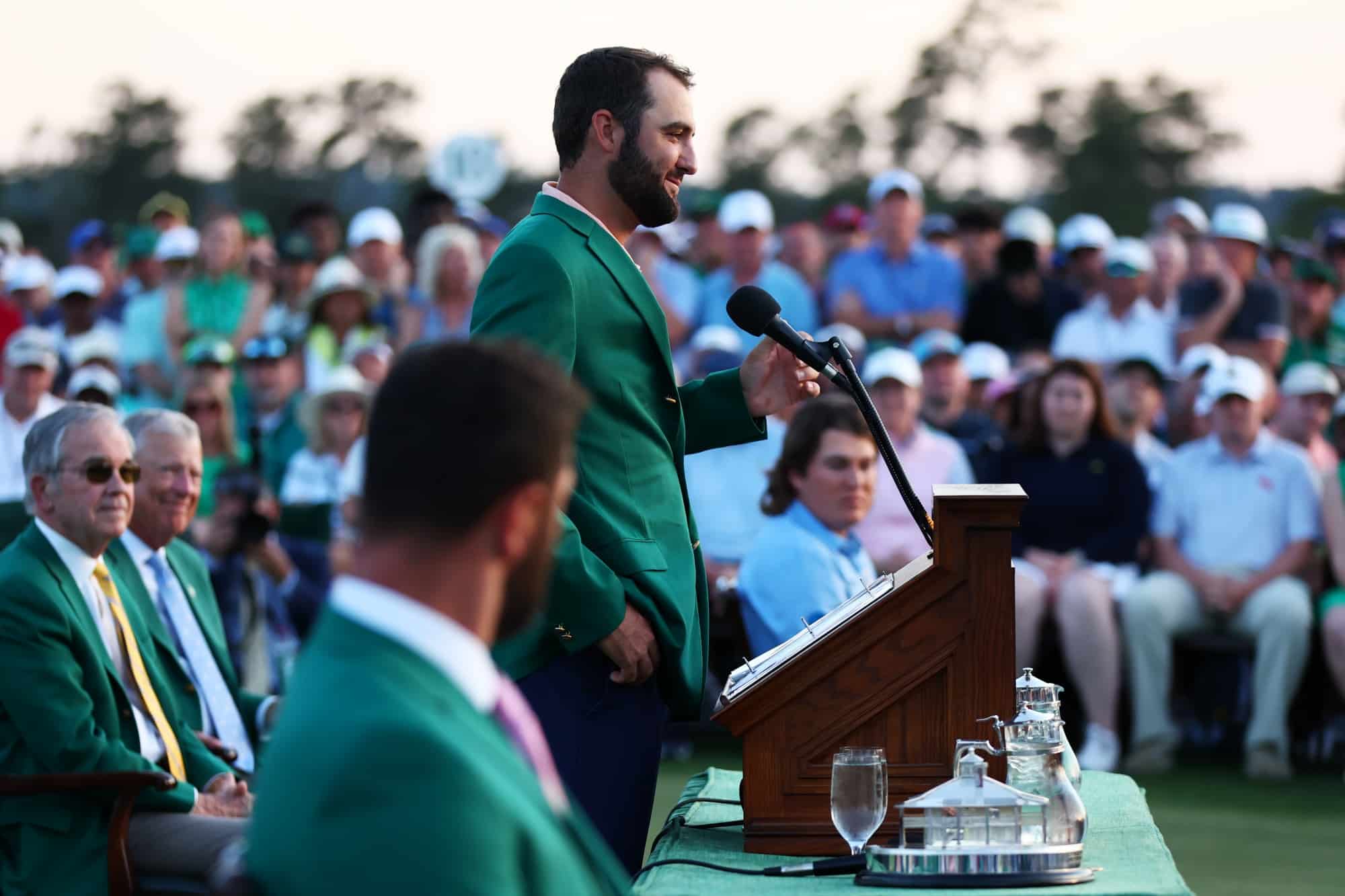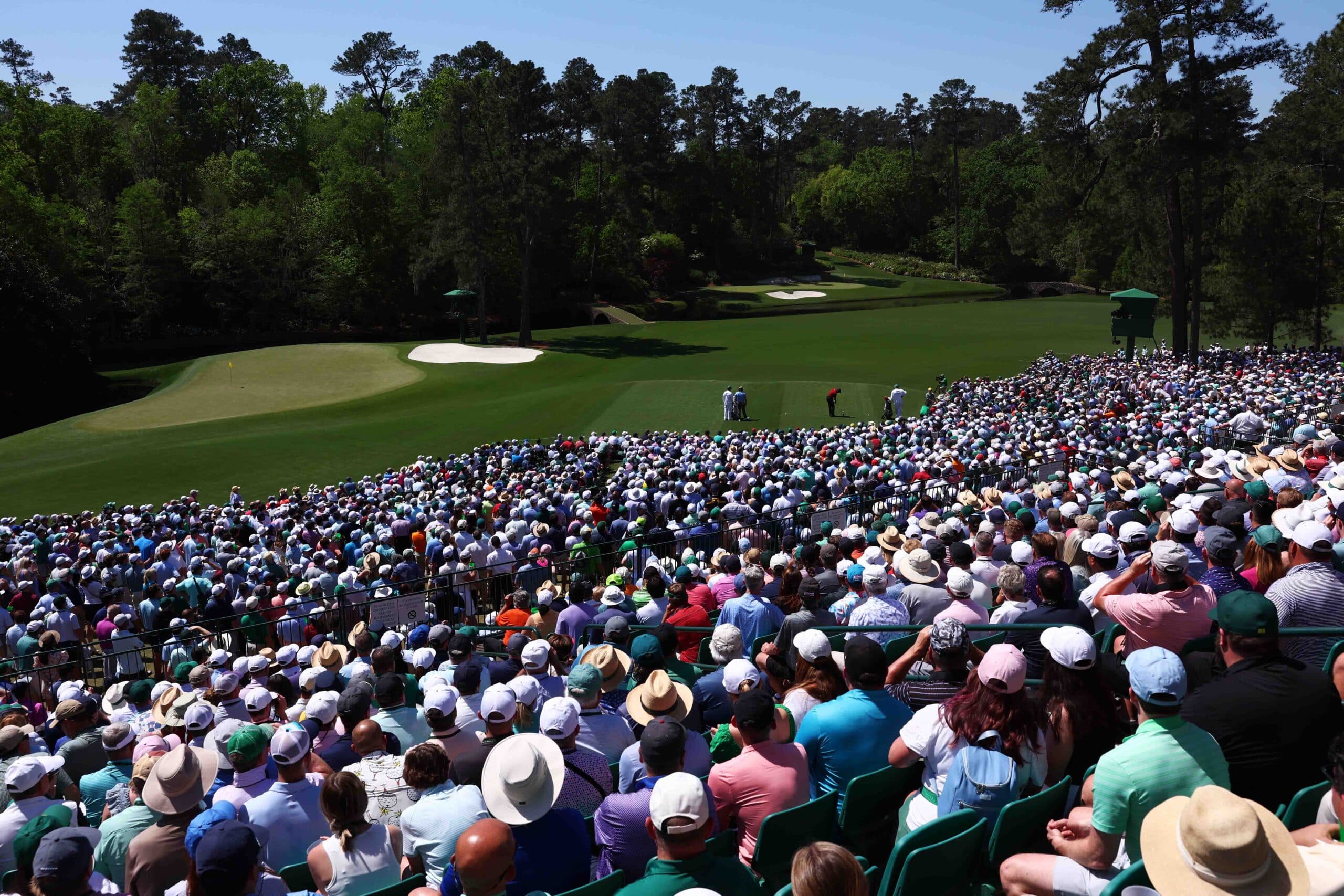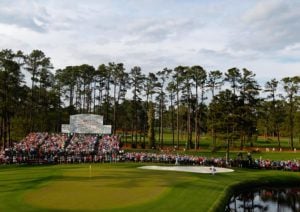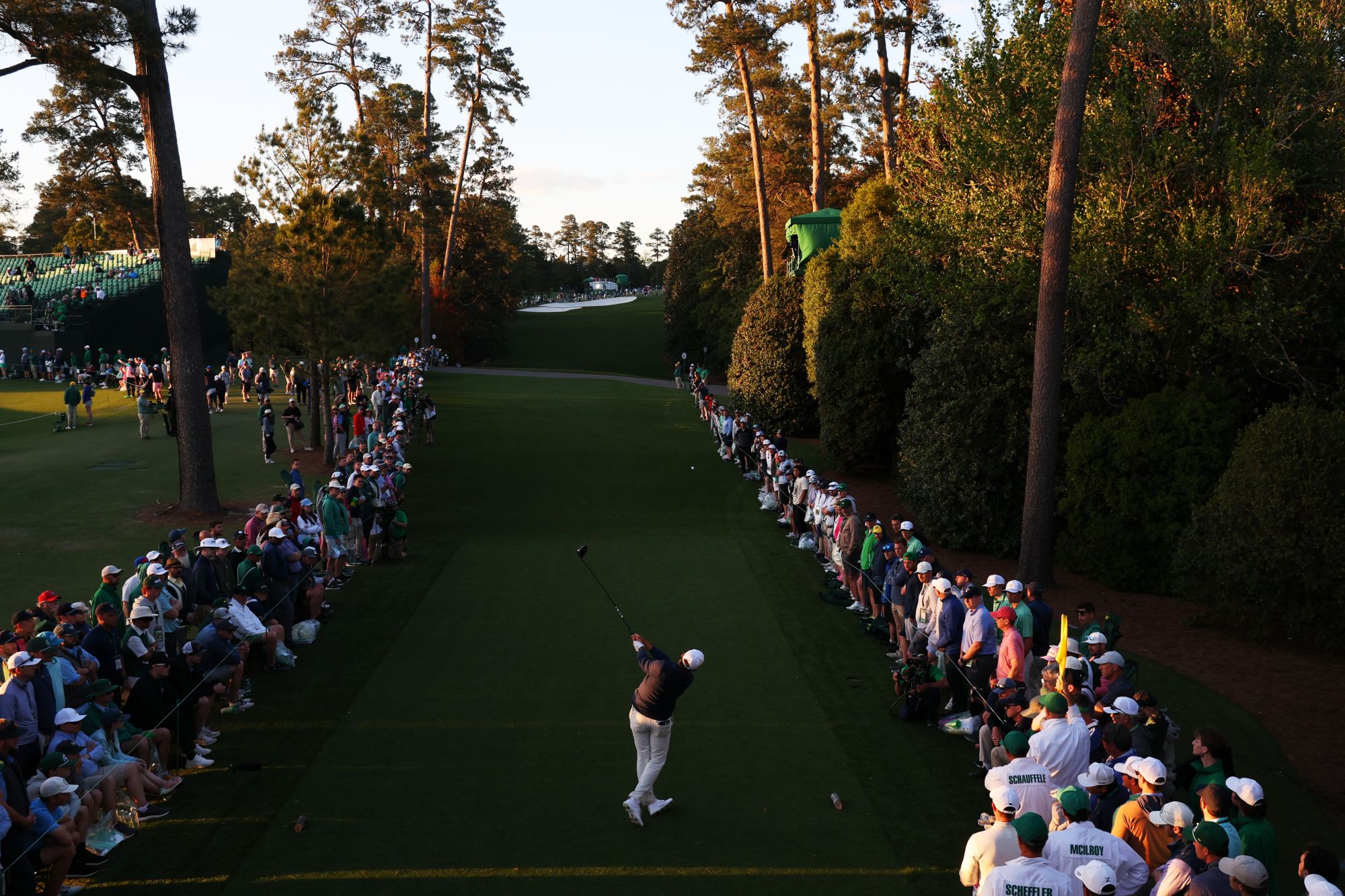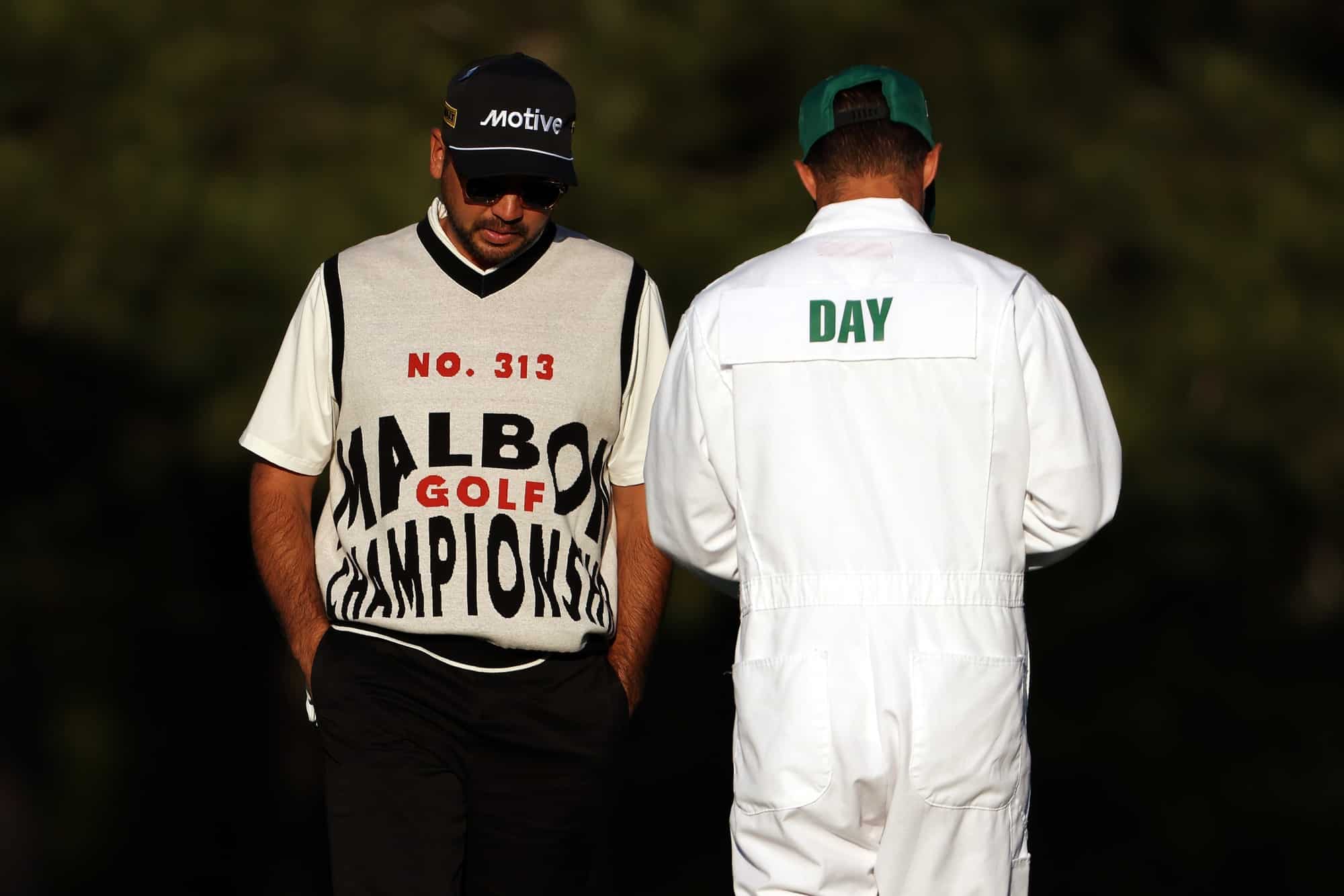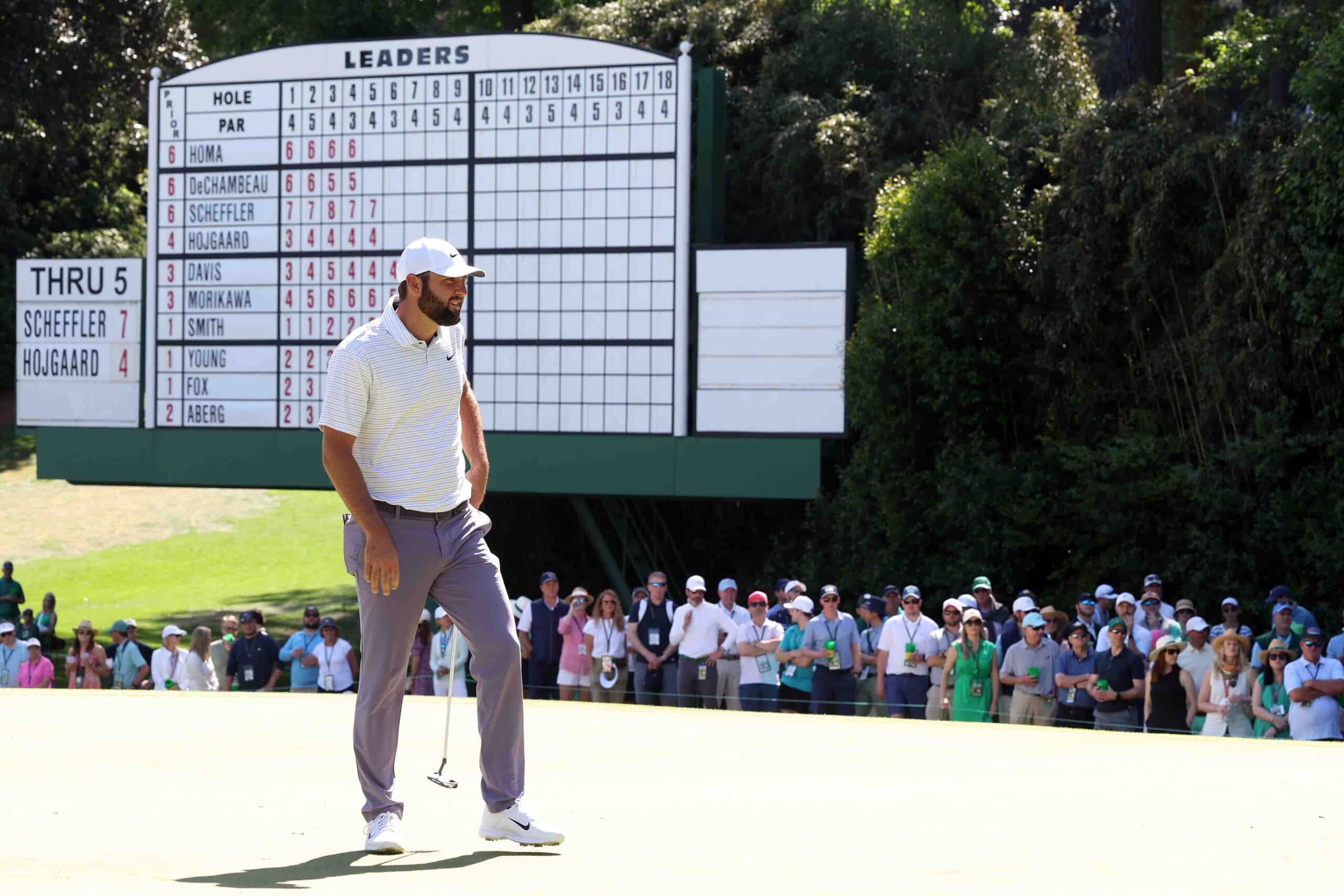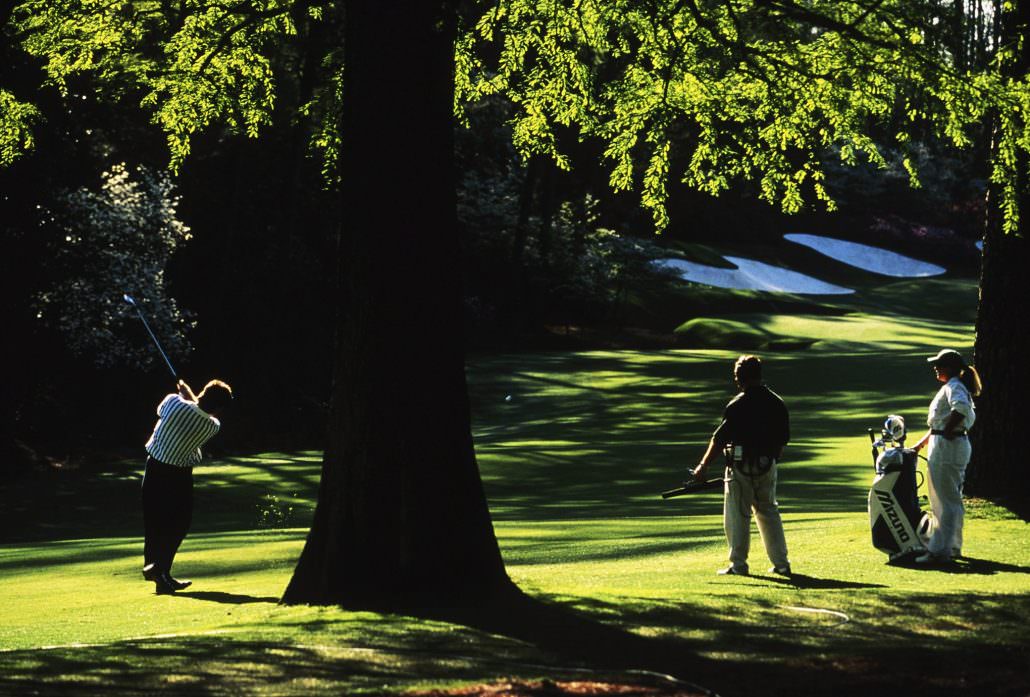
A peek into the history of the Masters
Michael Atkinson takes a look at the history of one of the most prestigious sporting events in the world – the Masters tournament
The bright green grass of beautiful fairways, the vibrant colours of azaleas, the tall trees, the pine needles, the white sand bunkers, the water, the fast greens, the yellow flags with that famous logo – this is the Masters Tournament.
One of the most prestigious sporting events in the world. For only the fourth time since its creation, the Masters was postponed in 2020, another sporting victim of coronavirus.
“Our overall aim at Augusta National has been to provide a golf course of considerable natural beauty, enjoyable for the average golfer and at the same time testing for the expert player striving to better par.
“We want to make bogeys easy if frankly sought, pars readily obtainable by standard good play, and birdies, except on par 5s, dearly bought.” The words of Bobby Jones, spoken at the opening of Augusta National Golf Club back in 1932, the golf course that would become home to the Masters Tournament.
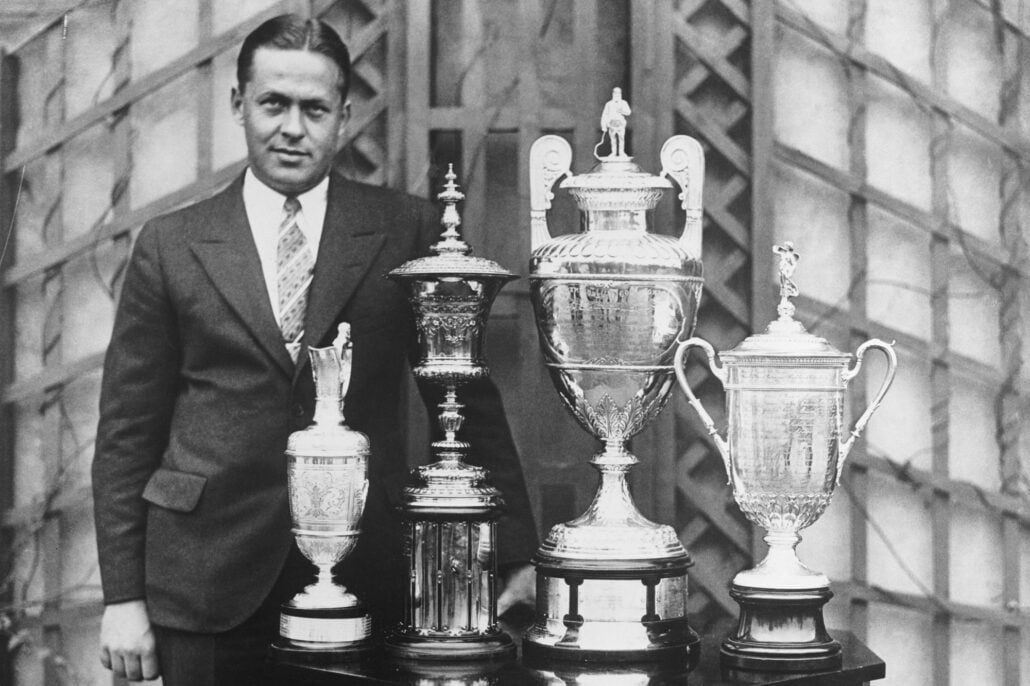
Born in Atlanta in 1902, Jones would become one of America’s most celebrated golfers and a global sporting icon.
Jones remains to this day, the only individual to have completed the golf Grand Slam – victories in all four golfing major championships in a calendar year. In the modern era, this would require victory at the Masters, the PGA Championship, the US Open and the Open Championship.
When Jones secured his Grand Slam in 1930, the Masters and the PGA Championship were still to be created, but the US Amateur and British Amateur were considered major championships at that time.
Today, only Tiger Woods has come close to joining Jones with this illustrious accolade. Woods won all four majors consecutively, but his victories spanned two different years, completing the fourth and final victory at the Masters Tournament in 2001, having won the PGA Championship, the US Open and the Open Championship in 2000.
Over his playing career as an amateur (his professional career was as a lawyer), Bobby Jones won 13 major championships (including his wins at the US & British Amateur), but having secured the Grand Slam, he retired from competitive golf at the age of 28.
As one of the most famous and recognised sportsmen in the world, Jones capitalised on this attention by producing 18 instructional golf videos in Hollywood. The films featured on-screen celebrities of the day being coached by Jones, further driving his fame.
It was this international fame which in part led to the idea to develop Augusta National. Jones sought an environment where he could continue to play golf with friends without the attention that he received everywhere he went, an elite private members club for the select few.
With a friend, businessman Clifford Roberts, they acquired a parcel of land to build a golf course, known as the ‘Fruitland Nurseries’ near Atlanta, an indigo plantation turned orchard where hundreds of varieties of azaleas would also be cultivated.
Those azaleas would form the stock from which Augusta National’s famous azaleas still bloom today, creating one of the most recognisable images of the Masters.
The golf course would be designed by Jones himself, alongside the British golf course architect, Dr Alister Mackenzie, a designer revered for his creation of the exclusive Cypress Point golf course in Monterey, California. In their design, the pair drew much inspiration from the Old Course, St Andrew’s.
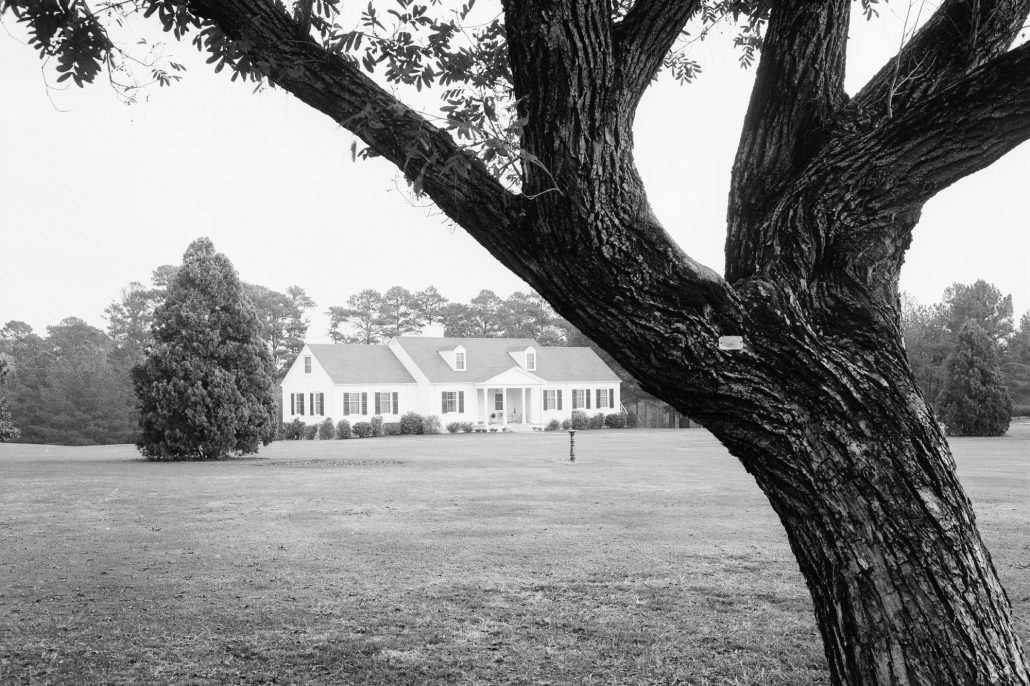
Horton Smith, the winner of the inaugural Masters (and the first two-times winner), would comment “to me, the Augusta National course has character, individuality, and personality. It is one of the few courses that really presents two games on most every hole – a game to reach the greens and another to figure the ever challenging contours after reaching the greens.” The course was heralded at the time as one of the finest in the world and it remains so to this day.
The greens at Augusta have become legendary – hard and fast – but have evolved substantially since those first created by Mackenzie. The greens now have an underground irrigation and ventilation system which was installed in 1994 and supports the maintenance of the extraordinary firmness of the greens, making them some of the most challenging putting surfaces in the world.
It’s not simply the greens that have evolved over time. Indeed, the whole course has undergone substantial changes since its foundation at the hands of a variety of different architects. Tree planting has narrowed the originally wide fairways, the course has been substantially lengthened to account for the distance of the modern golf game and a new cut of rough has been added.
Not all the changes to Augusta National have been well received. Tiger Woods once remarked in a book that some of the changes had “eroded strategic values that Bobby Jones and Alister Mackenzie had created as the course’s essential feature.”
Augusta National’s most famous stretch of holes is known as ‘Amen Corner’, a term which originated from the golf writer Herbert Warren Wind, who first used it in an article for Sports Illustrated back in 1958.

The trio of holes are as highly anticipated by competitors as they are by viewers of the tournament. These three holes – 11, 12, 13 – can make or break a victory at the Masters due to the ‘risk and reward’ opportunities they provide.
Their significance to the outcome is a fitting tribute to their original design by Alister Mackenzie, who enabled players to implement a number of different strategies to playing these holes, with much depending on the player’s confidence and bravery.
The most famous of the three is the par-5 13th, which features Rae’s Creek. Players can attempt to clear the water on the second shot to set up a possible eagle or they can lay up and settle for a par.
The first wave of members at Augusta National were recruited mostly from New York, with the offer of three days of golf on the course in the company of Bobby Jones himself, as well as Francis Ouimet, famed as the first amateur to win the US Open in 1913. Despite their best attempts, initial take-up of membership was low, resulting in several years of tough financial times for the course.
It was in 1934 that the first ‘Masters’ tournament was staged at Augusta National, entitled at the time simply as the ‘Augusta National Invitational Tournament’. Jones came out of competitive retirement for the first event, persuaded by his course co-founder, Roberts, mainly to promote the event and attract new membership given the club’s financial situation.
Whilst membership struggled initially, Augusta National is now one of the most exclusive golf courses in the world. The elite membership is by invitation only and restricted to only 300 individuals. Famous members have included President Dwight Eisenhower, who as President-Elect stayed for 10 days at the club before his inauguration.
Members receive a green jacket on joining the Club with the original idea that they would wear the jackets throughout the course of the Masters Tournament, ensuring those in attendance were aware of their status and ability to provide information on the event and the course.
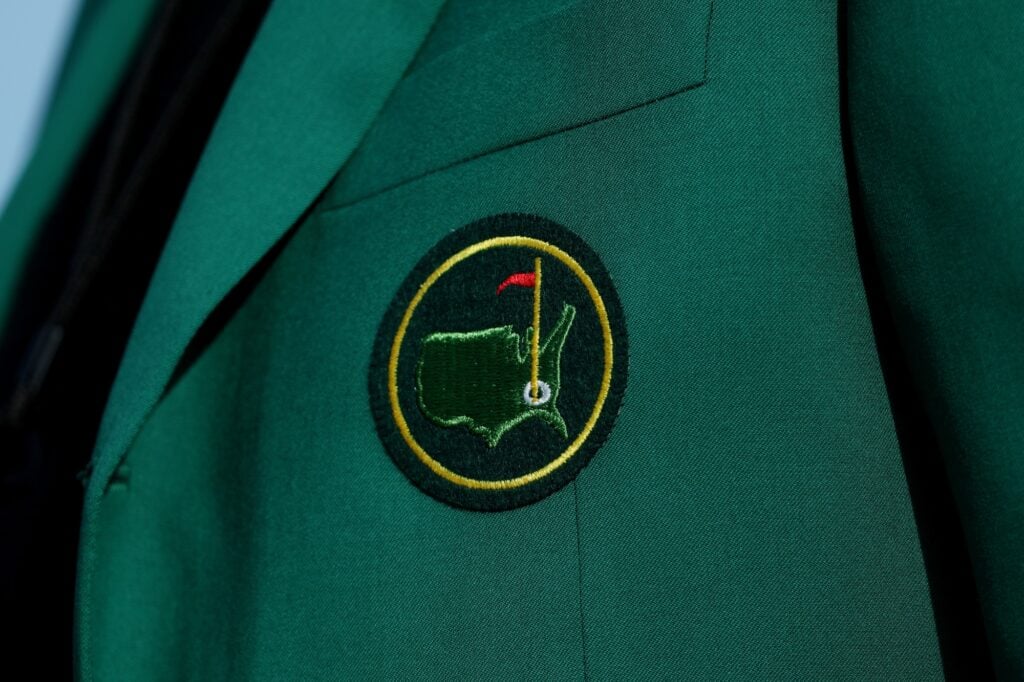
It was in 1949 that a green jacket was awarded to the winner of the event, with Sam Snead the first to receive one. Like the Open Championship’s Claret Jug, the green jacket has become one of the most famous sporting ‘trophies’ in the world. Winning the Masters and receiving a green jacket does not entitle the victor to membership of Augusta National however, it is a symbolic gesture only.
In addition to receiving the green jacket and a gold medal, the Masters champion earns the distinction of having his name engraved on the permanent Masters trophy, which is a reproduction of the Augusta National clubhouse.
Jones renamed the Augusta National Invitational the ‘Masters Tournament’ in 1939, commenting “I must admit the name was born of a touch of immodesty”, immodesty that he attributed to Clifford Roberts.
However, Jones was satisfied quickly with the name, stating later “I think the tournament is now quite well entitled to be called the Masters, because it has continued to assemble those who are entitled to be called masters of the game.”
The Masters is now a firmly established part of the global sporting calendar. It acts as the first major of the golfing year and remains unusual in that it is the only major to always be played at the same course each year.
Some of the most famous moments in golf have occurred during the Masters. In 1935, Gene Sarazen, another great American golfer with seven major championship wins and one of only five players in the world to achieve a career Grand Slam, scored a double-eagle (now more commonly known as an albatross) on the Par-5 15th at August National.
Writing about the historical moment, US sports writer Grantland Rice noted “As he swung, the double miracle happened. The ball left the face of his spoon like a rifle shot. It never wavered from a direct line to the pin.
“As it struck the green a loud shout went up. Then suddenly turned into a deafening, reverberating roar as the ball spun along its way and finally disappeared into the cup for a double-eagle two.”
Sarazen would later go on to comment “that double eagle wouldn’t have meant a thing if I hadn’t won the playoff the next day. The aspect I cherish most is that both Walter Hagen and Bobby Jones witnessed the shot.”
The early tournament continued to become popular. In the war years, the only other time that the Masters has been postponed, the course grounds were used to raise cattle and turkeys. The Masters resumed in 1946, and two years later in 1948, Jones would play his final round of competitive golf at the Masters – the tournament he had created.
The Masters, like many great sporting events, is noted for its traditions. In 1952, another of the famous Masters traditions started, that of the ‘Champions Dinner’.
The idea came from Ben Hogan and to this day, tradition holds that the current champion chooses the menu and pays the costs of the dinner, held at the start of the tournament week in the company of as many past champions as possible.
The dinners have become a gathering of the most famous and successful golfers of all time, where everyone wears their green jacket.
In 1953, Ben Hogan won his second Masters with a score of 274, breaking the previous record by five strokes. Arnold Palmer would win the first of his green jackets in 1958 and go on to become the first four-time champion in 1964.
In 1965, Jack Nicklaus won his second Masters by nine strokes – the largest victory margin in the tournament’s history, scoring 271 for the then record.
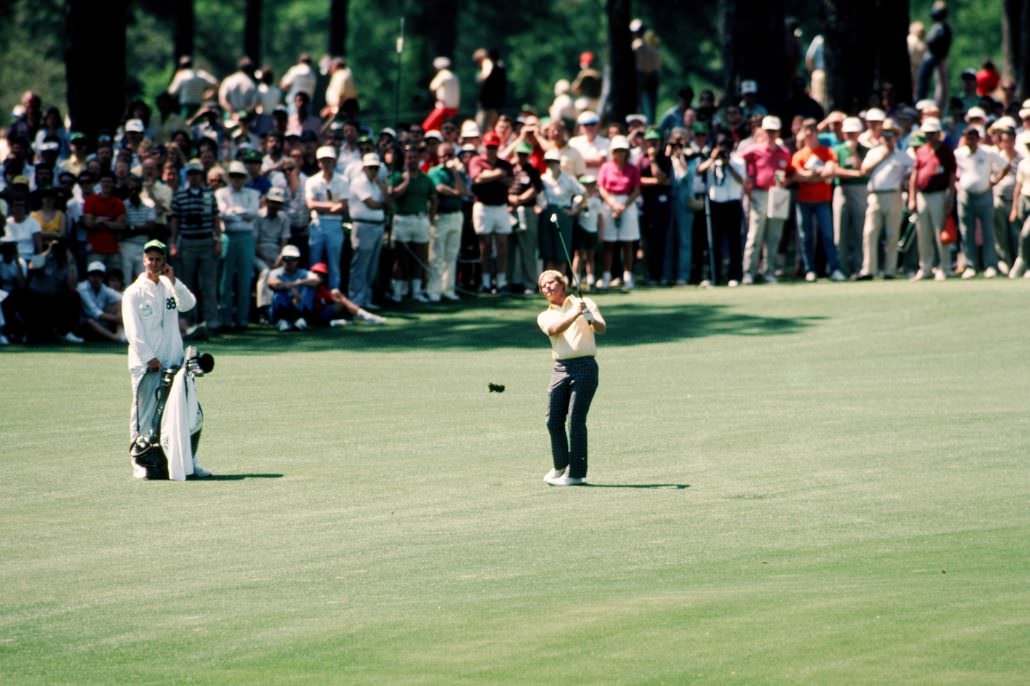
The 1970s would be the decade that witnessed the passing of the two men who had founded both Augusta National and the Masters – Bobby Jones and Clifford Roberts. Jones died in 1971 at 69 years of age.
He had attended every single Masters until 1968, when the spinal disease he suffered from, syringomyelia, made it too difficult for him to travel to Augusta from his home in Atlanta. Jones had endured the last 20 or so years of his life with this debilitating illness that made it progressively difficult for him to use his arms and legs.
After his death, Herbert Warren Wind paid tribute to Jones in The New Yorker, writing “He had incredible strength of character. As a young man, he was able to stand up to just about the best that life can offer, which is not easy, and later he stood up with equal grace to just about the worst.”
Clifford Roberts had proposed in 1966 that Augusta National change its by-laws to create the position of ‘President in perpetuity’ as a way to honour Jones. The club did so, electing Jones to the post with a statement which read ‘It is desired that the spirit of his principles, his acts of good sportsmanship, his innate modesty and other admirable and lovable qualities shall forever guide the policies of Augusta National and the Masters Tournament.’
6 years after the death of Bobby Jones, Clifford Roberts would pass away at the age of 83. Paying tribute to Roberts, Jack Nicklaus said “the standards and quality with which he conducted the Masters are unmatched anywhere”.
The 1980s would bring the start of a European influence on the Masters, courtesy of Seve Ballesteros, who became the first European to win the Masters at age 23, in 1980.
He would win again 3 years later in 1983 and chase Jack Nicklaus home in 1986 as Nicklaus secured his final green jacket. That win also delivered him the record for the most number of Masters victories, winning the tournament a total of six times and make him the oldest winner of the event at 46 years and 82 days old.
When he won in 1986, Nicklaus hadn’t won a major championship in six years, but he produced an outstanding back nine on the final day to claim victory.
Nicklaus would later reflect on the Masters that “from the first time I drove up Magnolia Lane at age 19, I had a special feeling about Augusta. Even today, I get chills driving up Magnolia Lane.”
Nick Faldo would secure a second green jacket in 1990, and enable him to match Nicklaus to become only the second player in history at that time to win back-to-back Masters titles.
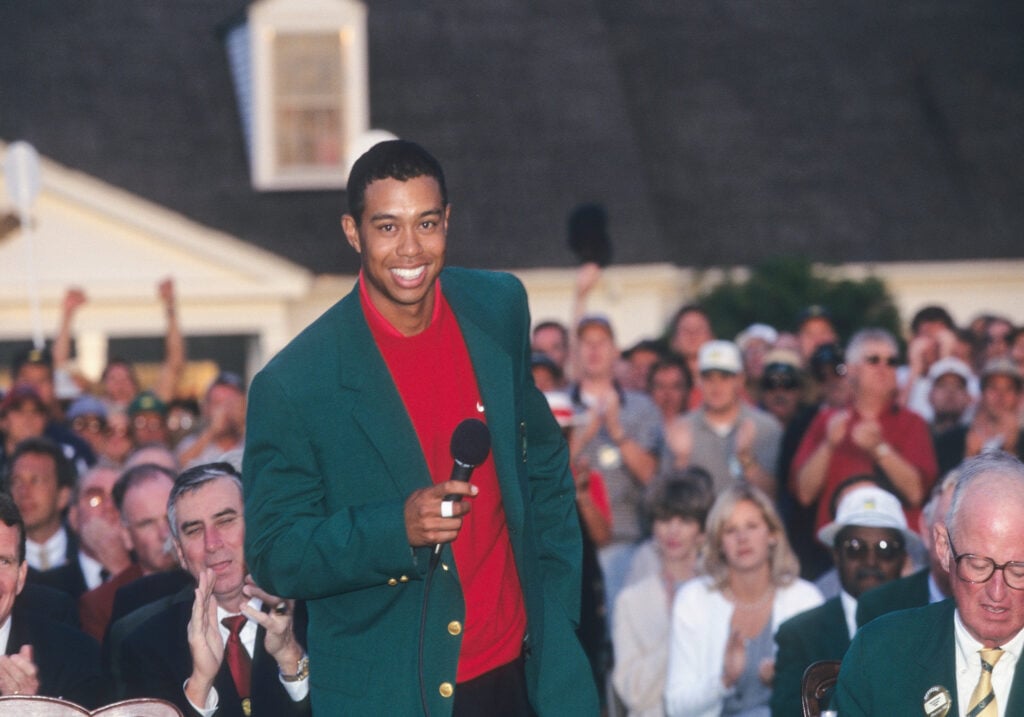
It would be 1997 that would usher in a new dawn in golf, and it would be at the Masters. This was the tournament that launched Tiger Woods into an era of dominance in the golfing world.
Woods claimed the first of his Masters victories, making him the youngest-ever champion at 21 years and 104 days. He also set the record for the lowest 72-hole total (18 under par 270) and delivered the widest-ever victory margin (12 strokes).
It wasn’t until 2015 that this tournament record score would come close to being challenged. In the end, it was equalled with Jordan Spieth winning and matching the 18-under 270 course record at that time.
Of course, only four years later it would be Woods once again, dismissed by many as a faded legend, who would display a come-back which was celebrated throughout the sports world.
The 2019 event belonged in so many different ways to Woods and with the victory he moved closer to the Jack Nicklaus Masters record, taking his tally of wins at the Masters to five. It delivered Woods his 15th major and signified one of the most sought-after returns to sporting glory.
It was strange for the Masters not to dominate sports headlines around the world during April 2020. The tournament would eventually take place in November 2020, without spectators and the famous Augusta roars as the world fought a global pandemic.
Dustin Johnson would make history at this unique edition of the Masters, breaking the course record with a 20-under 268 as he secured his first green jacket.
South African Masters champion, Gary Player, who holds the position as the first international player to win, once gave a fitting tribute to both the course and tournament which have become synonymous, as he said “If there’s a golf course in heaven, I hope it’s like Augusta National.”
Have your say on the History of the Masters
What has been the defining moment of the Masters for you? Let us know by leaving a comment on X!
Matt Chivers

Now on the wrong side of 25, Matt has been playing golf since the age of 13 and was largely inspired to take up the game by countless family members who played golf during his childhood.
Matt is a member at Royal Cinque Ports in Deal playing off a 5 handicap, just a pitching wedge away from his hometown of Dover where he went to school and grew up. He has previously been a member at Etchinghill and Walmer and Kingsdown in Kent.
Having studied history at the University of Liverpool, Matt went on to pass his NCTJ Exams in Manchester a year later to fulfil his lifelong ambition of becoming a journalist. He picked up work experience along the way at places such as the Racing Post, the Independent, Sportsbeat and the Lancashire Evening Post.
Matt joined NCG in February 2023 and is the website’s main source of tour news, features and opinion. He has reported live from events such as The Open, the Ryder Cup and The Players Championship, having also interviewed and spent time with some of the biggest names in the sport.
Consuming tour golf on what is a 24/7 basis, you can come to Matt for informed views on the game and the latest updates on the PGA Tour, DP World Tour, LPGA Tour, Ladies European Tour and LIV Golf.
What’s in Matt’s bag: Cobra LTDx LS driver, Cobra LTDx 3-wood, TaylorMade P7MC irons, Ping Glide 4.0 wedges, Odyssey putter.


